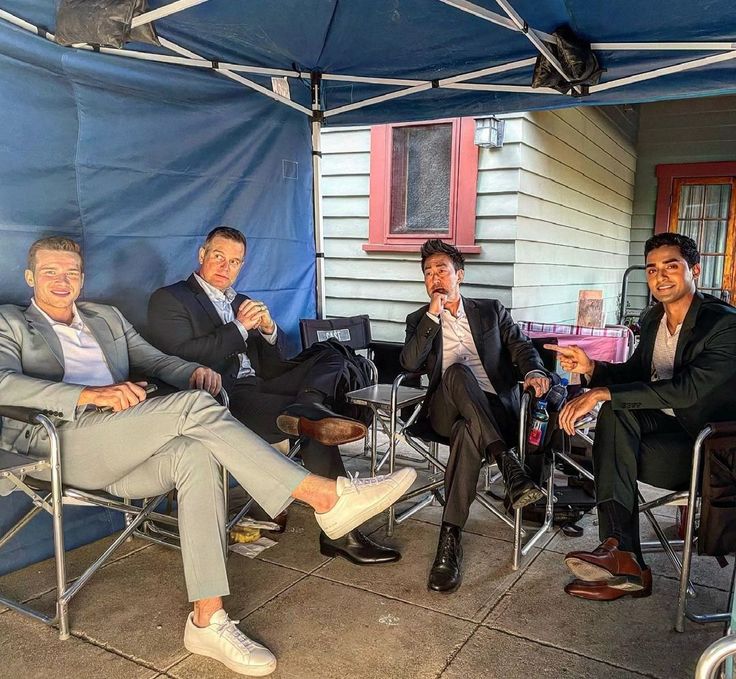
When 9-1-1 Reached for the Stars
When you think of 9-1-1, you picture high-speed chases, fiery rescues, and emotional family moments — not astronauts floating in space. But the hit Fox series took things to another level, quite literally, with its jaw-dropping zero-gravity space episode. Fans were left speechless as the show’s trademark chaos played out… in orbit.
So how did the crew of 9-1-1 pull off such a gravity-defying stunt? Let’s dive into the cosmic behind-the-scenes story that proved television magic has no limits.
The Big Idea: Why Take 9-1-1 to Space?
Breaking the Mold of Procedural Dramas
Most TV dramas stay grounded — figuratively and literally. But 9-1-1 isn’t your typical emergency show. The creators wanted to push boundaries and surprise even their most loyal fans.
Taking the show to space wasn’t just a gimmick. It was a creative risk meant to showcase how far human courage — and visual storytelling — could go when disaster strikes in the most unexpected places.
A Tribute to Real-Life Heroes
The storyline drew inspiration from real-life emergency responders who work in extreme environments. The writers wanted viewers to feel the same tension and awe astronauts experience when facing life-or-death situations above Earth.
Planning the Impossible: Months of Pre-Production
Before cameras rolled, the production team spent months figuring out how to make the zero-gravity illusion feel authentic.
Collaboration with Space Experts
To nail the physics of weightlessness, producers consulted NASA advisors and aerospace consultants who helped the crew understand how movement, floating, and inertia work in microgravity.
Detailed Storyboarding
Every shot was carefully storyboarded, mapping out how actors would “float” through the spacecraft set, how the camera would follow them, and how the visual effects team would later enhance the illusion.
The Set Design: Building a Space Station on Earth
Creating a believable space station on a TV budget is no small feat.
High-Tech Spacecraft Replica
Production designers built a modular spacecraft set that could tilt, rotate, and simulate motion. The panels, control screens, and ambient lighting were all modeled after real NASA interiors.
Harness Systems and Wire Work
Actors were fitted with custom harnesses attached to invisible wires. These rigs allowed them to move as if they were weightless — twisting, tumbling, and floating through the air in slow motion.
Cinematography in Zero Gravity
Camera Tricks That Defied Physics
To capture the floating sequences, cinematographers used gimbal-mounted cameras that could roll 360 degrees. This gave the illusion that the environment — not the actors — was moving.
Lighting for Space Authenticity
The team mimicked sunlight reflecting off the Earth by using LED panels with varying intensities. The subtle flickers and shadows made the scenes feel truly cosmic.
The Actors’ Training: Learning to “Float”
Physical Conditioning
The cast underwent weeks of movement training to master the art of floating naturally. Their movements had to be graceful and deliberate — every gesture exaggerated by the absence of gravity.
Working with Stunt Coordinators
Professional stunt teams guided actors on how to react physically during “zero-gravity emergencies,” ensuring safety while maintaining the illusion of chaos.
Special Effects: The Real Magic Behind the Screen
Green Screens and CGI Enhancements
While much of the scene was filmed on physical sets, CGI played a key role in completing the illusion. Artists added background visuals of Earth, stars, and drifting debris.
Digital Debris Simulation
Tiny floating tools, drops of water, and fragments of broken equipment were digitally animated to enhance realism.
Sound Design: Silence in Space
Creating the Right Atmosphere
In real space, sound doesn’t travel — but silence alone doesn’t make for thrilling TV. The sound team crafted a subtle blend of electronic hums and heartbeats, making viewers feel the eerie quiet of outer space.
Amplifying Emotional Impact
During intense moments, the soundtrack faded, allowing audiences to focus on the actors’ breathing and dialogue — amplifying the tension.
Costumes: Designing for Space Realism
Authentic Space Suits
Costume designers collaborated with aerospace costume specialists to create suits that looked real but were flexible enough for TV action.
Balancing Function and Fashion
Each suit had hidden zippers, cooling layers, and detachable helmets for comfort during long filming hours.
Editing the Episode: From Chaos to Masterpiece
Piecing Together the Illusion
Editors stitched together wire shots, CGI elements, and reaction close-ups frame by frame to ensure a seamless zero-gravity illusion.
Maintaining Pacing and Suspense
Timing was everything — too slow, and the scene dragged; too fast, and the illusion broke. The result? A perfectly balanced, heart-pounding sequence that kept fans glued to their screens.
The Challenges: What Could Possibly Go Wrong?
Physical Strain and Safety Risks
Actors hanging from harnesses for hours experienced muscle fatigue and motion sickness. Crew members had to pause filming often for rest breaks.
Budget Overload
Zero-gravity scenes are not cheap. Every minute of filming cost significantly more due to the complexity of the effects, equipment, and post-production work.
Fan Reactions: A Stellar Success
When the episode aired, social media exploded. Fans praised the show’s creativity and realism, calling it one of 9-1-1’s best episodes ever.
Hashtags like #911InSpace and #ZeroGravityRescue trended worldwide as audiences marveled at how the show turned a rescue mission into an unforgettable cinematic event.

What Made This Episode Stand Out
It wasn’t just the technical brilliance — it was the emotional storytelling that grounded the spectacle. Despite the cosmic setting, the human drama remained front and center: courage, teamwork, and survival against the odds.
Legacy: Redefining What’s Possible on TV
The success of the space episode set a new benchmark for television production. It proved that even network dramas could rival Hollywood blockbusters in scale and innovation.
Showrunners have hinted that this won’t be the last time 9-1-1 pushes the limits of reality. With each new season, fans now expect the unexpected — and that’s exactly what makes the show so addictive.
Conclusion: When TV Defied Gravity
The 9-1-1 zero-gravity episode wasn’t just another night of television — it was a technical triumph and a creative leap. From realistic floating effects to heartfelt performances, every detail showcased the show’s fearless storytelling spirit.
So the next time you see a rescue mission unfolding in space, remember: behind every jaw-dropping moment, there’s an entire team grounded in hard work, imagination, and a touch of movie magic.
